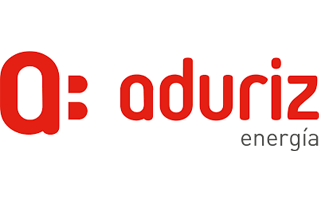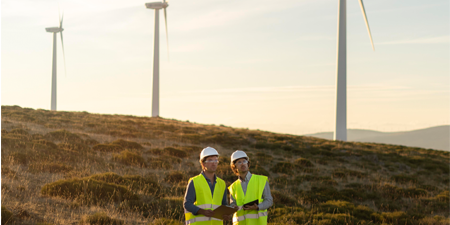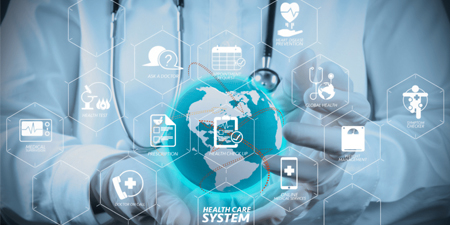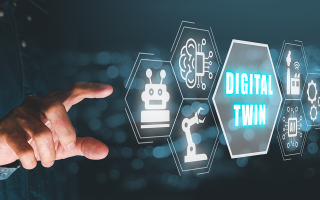ENERGY TRANSITION AND ECOSYSTEMS
Actions in favor of decarbonization will contribute to the protection of the environment and ecosystems. Prioritize the use of CO2-free energy sources, the electrification of processes, and improvements in energy efficiency. Incorporate smart grids, storage, aggregation, and other flexibility measures into the electrical system. Promote decentralized energy systems.

The energy transition primarily involves moving away from fossil fuels such as coal, oil, and natural gas, to increasingly incorporate renewable and environmentally friendly energy sources. This shift aims to reduce CO2 levels in the atmosphere to counteract global warming. It focuses not only on the production of renewable energy but also on the storage, distribution, and conversion of energy.
In addition to expanding renewable energy, a second pillar of the energy transition is to significantly increase energy efficiency. This encompasses everything from modernizing power plants to using energy-saving motors and industrial processes, as well as renovating buildings and equipment.
The energy supply system is shifting from large conventional power plants to a decentralized structure with numerous generation plants, such as photovoltaic energy. This requires adapting regional and municipal distribution networks to smart electricity grids, where producers, consumers, storage possibilities, and network resources are interconnected.
New concepts of energy storage and smart, decentralized energy networks are key elements of an energy system based on environmentally friendly sources. Since renewable electricity generation is more unpredictable and less consistent than that of large power plants, it is necessary to develop storage solutions and digital and intelligent networks for managing the surpluses generated during sunny or windy periods.
The power-to-gas concept is promising for a future with a high proportion of renewable electricity generation. It involves using excess wind or solar energy to break down water through electrolysis to obtain green hydrogen. It is also possible to convert excess wind or solar energy into heat (power-to-heat), liquid fuels (power-to-fuel), or basic chemicals (power-to-chemicals).
In the context of climate protection, decarbonization describes the goals and strategies for designing industrial and economic processes that do not use fossil fuels and do not release CO2 into the atmosphere. However, electrification is not a universal solution, as electricity is unsuitable for some applications, such as high-temperature heat generation needed in many industrial processes that are major CO₂ emitters. The same applies to air and maritime traffic, where only liquid fuels can provide the necessary energy. In the future, green hydrogen and synthetic fuels will be used, which are climate-neutral if hydrogen is produced through electrolysis using electricity from renewable sources.
CUSTOMERS IN THE ENERGY TRANSITION AND ECOSYSTEMS












TECHNOLOGIES APPLIED IN THE ENERGY TRANSITION AND ECOSYSTEMS
IoT devices, sensing technology, and digitalization.
The Internet of Things (IoT) is revolutionizing the way we use and manage energy. The connection of different devices and systems creates new opportunities to create a more sustainable energy supply.
By integrating IoT devices, such as smart meters, consumers can monitor and analyze their energy consumption in real time. These devices collect data on electricity usage and make it available to users through an online application.
By connecting decentralized renewable energy sources, such as solar systems or wind farms, with IoT, energy providers can integrate the generated electricity into the power grid more efficiently. Smart technologies can predict energy demand and control renewable energy production accordingly to ensure the optimal use of green energy sources.
Using IoT and data analysis algorithms, energy providers can forecast energy demand across different sectors. These forecasts allow for efficient energy production and distribution, as energy providers can plan their resources accordingly. This leads to optimized use of energy sources and a reduction in excess capacity.
Smart Storage and Networks
The term “smart grid” describes the communicative connection of the actors in the energy system from generation to transportation, storage, distribution, consumption, and the energy supply network. The basic idea is to include in the system all devices that are connected to the electrical grid in a “plug & play” manner. This creates an integrated network of data and energy with structures and functionalities that have great potential.
A smart grid optimally coordinates the generation, storage, and consumption of energy and compensates for fluctuations in performance. This operates through information and communication technologies. Alongside the electrical grid, a data network is being created that intelligently regulates fluctuations in energy supply on the grid. Furthermore, electricity consumption through the smart grid can be used to enable greater electricity usage by end-users utilizing dynamic electricity rates to better manage surpluses.
Energy storage is not the same as electricity storage: for greater technical accuracy, it should be noted that electricity is not stored, but rather the energy potential of the respective energy source. Depending on how the different storage systems operate, distinctions are made between mechanical, kinetic, chemical, or electrical storage. It does not matter what forms of energy are used for charging and discharging. In the case of a battery, for example, charging is done with electrical energy, but storage is in the form of chemical energy. Gas or liquid fuel tanks, on the other hand, absorb chemical energy and release it again without loss. However, the form of energy determines the type of storage used. With the growing expansion of photovoltaic and wind energy, interest in electrical energy storage has significantly increased.
Circular Economy and Decarbonization.
The EU’s climate strategy calls for a reduction in greenhouse gas emissions of at least 55% by 2030 and total decarbonization by 2050. This poses enormous challenges, especially for manufacturing companies, because many preliminary products and raw materials already have high CO2 emissions even before being processed.
One of the solutions involves developing strategies to achieve a sustainable circular economy and turning resources and raw materials into multifunctional items by constructing circular value chains.
As a central driving force, decarbonization, or more precisely: defossilization, meaning the replacement of carbon-containing products currently made from fossil raw materials, is at the heart of efforts to curb climate change. Efficient technologies play an essential role if we want to maintain our standard of living while using raw materials efficiently. Processing sustainable raw materials and waste from biological or circular sources requires optimized processes in the collection, preparation, and processing of raw materials into innovative products for the creation of sustainable value. Decarbonization or defossilization affects not only the energy supply for production processes but also the value chains of products, including the utilization of exhaust gases and by-products of production.
Energy in Building / City
The bet on fossil fuels has shaped the organization and growth of our cities so decisively that today there are structural dependencies.
Cities consume 75% of the world’s primary energy, especially in the areas of construction and mobility. Our cities are car-oriented, and most buildings were constructed without considering energy standards. Research activities on comprehensive solutions will pave the way to promote the development of environmentally friendly cities. This means more quality of life, health, secure supplies, and social cohesion for urban residents.
Pioneering cities are advancing together and developing practical and climate-effective solutions for energy and mobility transition, which should be implemented and disseminated quickly.
OUR PROYECTS IN ENERGY TRANSITION AND ECOSYSTEMS
AGROTECYL – Sustainable, autonomous, and intelligent fertigation system for crop irrigation.
The project focuses on the research and development of a sustainable and autonomous AI-based fertigation system for crops, capable of predicting crop irrigation and fertilisation needs, optimising the use of water, energy and fertilisers.
Duration: 2017–2018
SuN4Med – Development of Biodegradable and Antimicrobial Food Packaging
Sustainable and Innovative Food Packaging Based on Agro-Industrial By-Products and Natural Antimicrobials from the Mediterranean Area.
Duration: 2024-2026
ECENOVA – Ecosystem for Innovative Energy Communities
The creation of an ecosystem that facilitates energy exchange between prosumers, using energy communities as a means to efficiently and sustainably manage the production, storage, and distribution of renewable energy.
Duration: 2024-2025
EIFEDE Ecosystem – Boosting Energy with AI and Data
The main objective of the EIFEDE Group is to promote a conducive environment for business innovation, focusing on the development and implementation of enabling technologies within the energy sector.
Duration: 2024-2025
ALIMTECH – Research, development, and implementation of cross-cutting technological solutions for the agri-food sector
ALIMTECH seeks innovative solutions for global agri-food challenges, prioritizing sustainability and competitiveness through the collaboration of 16 companies.
Duration: 2023-2025
SHAREDH2 SUDOE. Renewable Hydrogen: A Solution for Flexible and Distributed Energy Storage in CELs
Promote and validate the use of renewable hydrogen as a flexible and distributed energy storage solution in CEL and other shared uses as an alternative to boost strategic rural areas.
Duration: January 2024 - December 2026
Sudoe Hospital 4.0 – Intelligent Energy Management in Hospitals
Hospitals are buildings of continuous use, which have very specific air conditioning requirements in their different spaces and are conditioned to a climatological evolution characteristic of the Sudoe territory. Inefficient management or their inadequacy lead to incensive costs, avoidable emissions and inefficiency of public investment in their construction and maintenance.
Duration: October 2019 - March 2022
RecExpert 4.0: Expert System for Injection Moulding Quality
RecExpert 4.0, the expert system for injection moulding ensures quality in recycled thermoplastics. The project levrages Industry 4.0 technologies to enhance sustainability and process control.The RecExpert 4.0 project aims to respond to the technological need to...
iMERMAID – Innovative solutions for Mediterranean Ecosystem Remediation
iMERMAID will empower the efforts to create a zero pollution,
contaminant free waters by enabling the Chemical Strategy's goals to become a practical reality
Duration: 2023-2026
Agora – Smart Building Energy Management Solutions
To bring to the market a holistic smart solution capable of promoting a more sustainable energy and water consumption from producer to final consumer
Duration: 2022-2025










